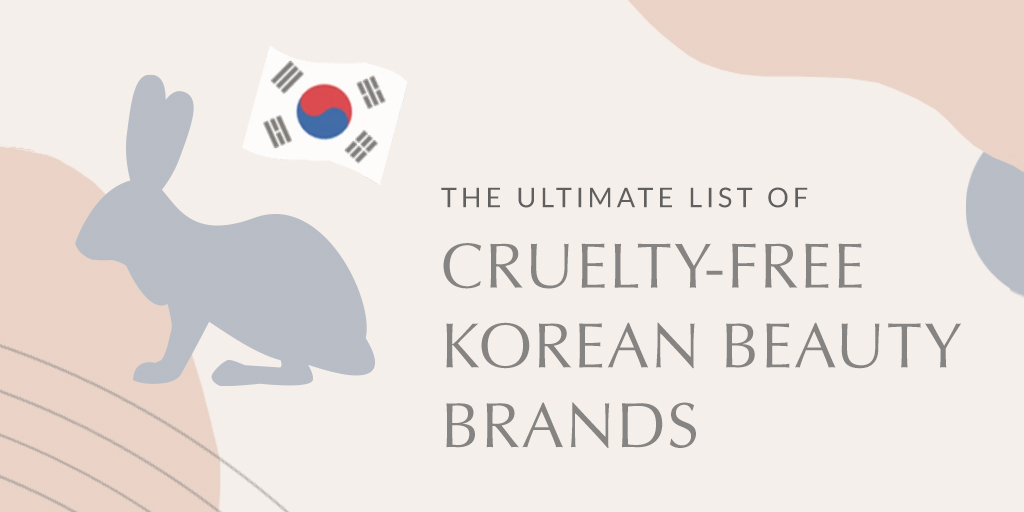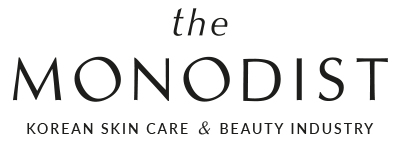
List of cruelty-free Korean beauty brands (skincare and makeup)
(Last updated: September 2021)
Below is a comprehensive list of cruelty-free K-Beauty brands that don’t test on animals, at least to my best knowledge. I based this list off official or reputable Korean and international sources, let me know if you have any information that contradicts any of the below statements and I’ll gladly look into it.
Please note that this is only a list of cruelty-free K-Beauty brands, not vegan brands. Meaning that some of the brands below don’t test on animals but might still use ingredients of animal origin (such as snail mucin and the likes). If you’re interested in a list of vegan Korean brands, I will make a separate a list.
Notes on this list
I decided to not include any brand that, despite being listed as cruelty-free K-beauty brands on some retailer websites, didn’t provide any public statement or certification to back up this claim.
The label ‘Unclear‘ indicates that the information currently available is inconsistent and/or contradictory. For instance, the retailer Peach&Lily says to have received a cruelty-free guarantee from Mizon, but an article from a prominent Korean financial magazine reports that Mizon performs animal tests in China. The brand hasn’t responded to these claims, making it hard to make a final judgement on their cruelty-free stance.
The label ‘Unconfirmed‘ indicates a company which previously claimed to not perform any animal tests by law, but that has failed to provide KARA with an official update in 2019.
This list took months of research, so I kindly ask you to credit my work if you’re using or referring to this post on your website.
BRAND NAME |
NAME IN HANGUL |
ANIMAL TESTS IN KOREA |
ANIMAL TESTS BY LAW |
CERTIFIED BY KARA |
SOURCE |
9Wishes |
나인위시스 |
No |
Unclear† |
No |
|
17vDerma |
17브이더마 |
No |
No |
No |
|
A-Some |
에이트루 |
No |
Unclear† |
Yes |
|
A-True |
에이트루 |
No |
No |
Yes |
|
Abbamart |
아바마트 |
No |
No |
No |
|
Acmer |
아크메르 |
No |
No |
Yes |
|
AidaCosmetics |
아이다코스메틱 |
No |
Unconfirmed |
Yes |
|
AllNature (Nature’s Friend) |
자연의벗 (다자연) |
No |
No |
Yes |
|
Aromatica |
아로마티카 |
No |
No |
Yes |
|
Axis-Y |
엑시스와이 |
No |
No |
No |
|
Beauty of Joseon |
조선미녀 |
No |
No |
No |
|
Beautyqlo |
뷰티클로 |
No |
Unconfirmed |
Yes |
|
Beauty Recipe |
뷰티레시피 |
No |
No |
Yes |
|
Bebe Cell |
베베셀 |
No |
Unconfirmed |
Yes |
|
Bebeskin |
베베스킨코리아 |
No |
No |
Yes |
|
Beigic |
베이직 |
No |
No |
Yes |
|
Benton |
벤튼 |
No |
No |
No |
|
Be The Skin |
비더스킨 |
No |
No |
No |
|
Beyond |
비욘드 |
No |
Unclear* † |
Yes |
|
B Lab |
비랩 |
No |
No |
No |
|
Blithe |
블라이드 |
No |
No |
No |
|
Blossom Jeju |
블로섬제주 |
No |
No |
No |
|
Bonajour |
보나쥬르 |
No |
No |
Yes |
|
Byherb |
바이허브 |
No |
No |
Yes |
|
By Wishtrend |
위시트렌드 |
No |
No |
No |
|
Caolion |
카오리온 |
No |
No |
No |
|
Care:nel |
까레넬 |
No |
No |
No |
|
Chica y Chico |
치카이치코 |
No |
No |
No |
1 (Parent company) |
Chobs |
찹스 |
No |
No |
No |
|
Commleaf |
콤리프 |
No |
No |
No |
|
COSRX |
코스알엑스 |
No |
No* |
No |
|
Cremorlab |
크레모랩 |
No |
Unclear |
No |
|
Dear Dahlia |
디어달리아 |
No |
No |
No |
|
Dear Klairs |
디어 클레어스 |
No |
No |
Yes |
|
Dionel |
디오넬 |
No |
No |
No |
|
Dr Bio |
닥터바이오 |
No |
No |
No |
|
Eglips |
이글립스 |
No |
No |
No |
|
E Nature |
이네이처 |
No |
Unclear |
No |
|
Earth’s Recipe |
얼스레시피 |
No |
Unclear† |
Yes |
|
Energy People |
에너지피플 |
No |
No |
Yes |
|
Euyira |
유이라 |
No |
No |
No |
|
Everain |
에버레인 |
No |
No |
Yes |
|
Grimelin |
그레이멜린 |
No |
No |
Yes |
|
Half Moon Eyes |
하프 문 아이즈 |
No |
No |
Yes |
|
Happy Vegan |
해피비건 |
No |
No |
No |
|
Heimish |
헤이미쉬 |
No |
No |
No |
|
Hersteller |
허스텔러 |
No |
No |
No |
|
Hyggee |
휘게 |
No |
No |
No |
|
Ishard |
아이샤드 |
No |
No |
Yes |
|
Isntree |
이즈앤트리 |
No |
No |
No |
|
iUNIK |
아이유닉 |
No |
No |
No |
|
I’m From |
아임프롬 |
No |
No |
No |
|
J. One |
제이원 |
No |
Unclear |
No |
|
Jumiso (Helloskin) |
주미소 (헬로스킨) |
No |
No |
No |
|
Keep In Touch |
키핀터치 |
No |
No |
No |
|
Label Young |
라벨영화장품 |
No |
No |
No |
|
Lagom |
라곰 |
No |
No |
No |
|
Limese |
리메세 |
No |
No |
No |
|
The Lotus |
더로터스 |
No |
No |
No |
|
May Coop |
메이쿱 |
No |
No |
No |
|
Maska Company |
마스카컴퍼니 |
No |
No |
Yes |
|
Mizon |
미즈온 |
No |
Unclear |
No |
|
Nakeup Face |
네이크업 페이스 |
No |
No |
No |
|
Naturekind |
네이처카인드 |
No |
No |
No |
|
NMC |
엔엠씨 |
No |
Unclear |
Yes |
|
Neogen |
네오젠 |
No |
Unclear |
No |
|
Olivarrier |
올리베리어 |
No |
No |
No |
|
OnA |
오앤에이 |
No |
No |
Yes |
|
Onsiya |
온시야 |
No |
No |
Yes |
|
O’Sum |
오썸 |
No |
No |
No |
|
Papa Recipe |
파파레서피 |
No |
No |
No |
|
The Plant Base |
더플랜트베이스 |
No |
No |
No |
|
Purito |
퓨리토 |
No |
No |
No |
|
RE:P |
리피 |
No |
No* |
No |
|
Rokkiss |
록키스 |
No |
Unconfirmed |
Yes |
|
SanDaWha (Skincure) |
산다화 (스킨큐어) |
No |
Unconfirmed |
Yes |
|
Seantree |
씨앤트리 |
No |
Unconfirmed |
Yes |
|
Serumkind |
세럼카인드 |
No |
No |
No |
|
Sevendrops |
세븐드롭스 |
No |
Unclear† |
Yes |
|
Shangpree |
샹프리 |
No |
No |
No |
|
Sidmool |
시드물 |
No |
No |
Yes |
|
Siseundeusi |
시슨드시 |
No |
Unclear† |
Yes |
|
Skin&Lab |
스킨앤랩 |
No |
No |
No |
|
Skin Watchers |
스킨와쳐스 |
No |
No |
Yes |
|
SkinEye |
스킨아이 |
No |
Unclear† |
Yes |
|
SkinGrammar |
스킨그래머 |
No |
No |
No |
|
Swanicoco |
스오니코코 |
No |
Unclear† |
Yes |
|
The Soonsoo |
더:순수 |
No |
No |
Yes |
|
The Vegan Glow |
더비건글로우 |
No |
No |
No |
|
Treeannsea |
트리앤씨 |
No |
Unconfirmed |
Yes |
|
Unleashia |
언리시아 |
No |
No |
No |
|
Urang |
유랑 |
No |
No |
No |
*Owned by a parent company that runs / pays for animal tests where they are required by law.
†Brands that received a Chinese FDA certification but haven’t yet clarified if they had to perform animal tests to obtain it.
